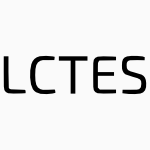66 papers:
 CASE-2015-LyuWC #algorithm #heuristic #integer #programming
CASE-2015-LyuWC #algorithm #heuristic #integer #programming- Mixed integer programming model and heuristic algorithm for production planning of continuous casting and hot rolling (ML, ZW, FTSC), pp. 1503–1508.
 DATE-2015-ConficoniBTTB #energy
DATE-2015-ConficoniBTTB #energy- Energy-aware cooling for hot-water cooled supercomputers (CC, AB, AT, GT, LB), pp. 1353–1358.
 DATE-2015-DoustiP #distributed #power management
DATE-2015-DoustiP #distributed #power management- Power-efficient control of thermoelectric coolers considering distributed hot spots (MJD, MP), pp. 966–971.
 ICSME-2015-SharmaTL #question #re-engineering #twitter #what
ICSME-2015-SharmaTL #question #re-engineering #twitter #what- What’s hot in software engineering Twitter space? (AS, YT, DL), pp. 541–545.
 HT-2014-ShuaiLXWG #category theory #twitter
HT-2014-ShuaiLXWG #category theory #twitter- Comparing the pulses of categorical hot events in Twitter and Weibo (XS, XL, TX, YW, CG), pp. 126–135.
 DATE-2013-RakossyHTSNO #architecture #array #fault #functional #testing
DATE-2013-RakossyHTSNO #architecture #array #fault #functional #testing- Hot-swapping architecture with back-biased testing for mitigation of permanent faults in functional unit array (ZER, MH, HT, TS, YN, HO), pp. 535–540.
 ITiCSE-2013-BurgRK #education #music
ITiCSE-2013-BurgRK #education #music- Hot fusion: music, art, and computer science education (JB, SR, WK), pp. 313–314.
 CSMR-2012-Schwarz #development
CSMR-2012-Schwarz #development- Hot Clones: A Shotgun Marriage of Search-Driven Development and Clone Management (NS), pp. 513–515.
 MLDM-2012-JoenssenB
MLDM-2012-JoenssenB- Hot Deck Methods for Imputing Missing Data — The Effects of Limiting Donor Usage (DWJ, UB), pp. 63–75.
 SEKE-2012-WangXC #linear #mining #network #social
SEKE-2012-WangXC #linear #mining #network #social- Sparse Linear Influence Model for Hot User Selection on Mining a Social Network (YW, GX, SKC), pp. 1–6.
 GPCE-2012-FreemanJF #library #named #user interface #web
GPCE-2012-FreemanJF #library #named #user interface #web- HotDrink: a library for web user interfaces (JF, JJ, GF), pp. 80–83.
 SAC-2012-ParkDNDKK #identification #memory management #named
SAC-2012-ParkDNDKK #identification #memory management #named- HotDataTrap: a sampling-based hot data identification scheme for flash memory (DP, BKD, YN, DHCD, YK, YK), pp. 1610–1617.
 ICSE-2012-Schwarz #development
ICSE-2012-Schwarz #development- Hot clones: Combining search-driven development, clone management, and code provenance (NS), pp. 1628–1629.
 LDTA-2012-LinckeS #concept #higher-order #object-oriented
LDTA-2012-LinckeS #concept #higher-order #object-oriented- From HOT to COOL: transforming higher-order typed languages to concept-constrained object-oriented languages (DL, SS), p. 3.
 DAC-2011-ZhangDWT #composition #detection #self
DAC-2011-ZhangDWT #composition #detection #self- Self-aligned double patterning decomposition for overlay minimization and hot spot detection (HZ, YD, MDFW, ROT), pp. 71–76.
 ICDAR-2011-KonyaES #using
ICDAR-2011-KonyaES #using- Character Enhancement for Historical Newspapers Printed Using Hot Metal Typesetting (IVK, SE, CS), pp. 936–940.
 ICSM-2011-SnipesRM #analysis
ICSM-2011-SnipesRM #analysis- Code Hot Spot: A tool for extraction and analysis of code change history (WS, BPR, ERMH), pp. 392–401.
 PLDI-2011-DEliaDF #mining
PLDI-2011-DEliaDF #mining- Mining hot calling contexts in small space (DCD, CD, IF), pp. 516–527.
 CHI-2011-WilsonHBH #feedback #mobile
CHI-2011-WilsonHBH #feedback #mobile- Some like it hot: thermal feedback for mobile devices (GW, MH, SAB, SAH), pp. 2555–2564.
 CIKM-2011-LiuYS #dataset #query
CIKM-2011-LiuYS #dataset #query- Subject-oriented top-k hot region queries in spatial dataset (JL, GY, HS), pp. 2409–2412.
 KDIR-2011-MallJP #correlation #detection
KDIR-2011-MallJP #correlation #detection- Detecting Correlations between Hot Days in News Feeds (RM, NJ, VP), pp. 375–378.
 BX-2011-Gibbons #bidirectional #programming #topic
BX-2011-Gibbons #bidirectional #programming #topic- HOT Topics in Bidirectional Programming (JG), p. 56.
 CIKM-2010-ParkSYRY #network #performance #query
CIKM-2010-ParkSYRY #network #performance #query- An efficient data-centric storage scheme considering storage and query hot-spots in sensor networks (YP, DS, JY, CTR, JY), pp. 1325–1328.
 SAC-2010-ThapaS #impact analysis #process #refactoring
SAC-2010-ThapaS #impact analysis #process #refactoring- Assessing the impact of refactoring activities on the JHotDraw project (IT, HPS), pp. 2369–2370.
 ICSE-2010-HazzanD #framework #re-engineering
ICSE-2010-HazzanD #framework #re-engineering- A HOT --- Human, Organizational and Technological --- framework for a software engineering course (OH, YD), pp. 559–566.
 CC-2010-RoyS #optimisation
CC-2010-RoyS #optimisation- The Hot Path SSA Form: Extending the Static Single Assignment Form for Speculative Optimizations (SR, YNS), pp. 304–323.
 DAC-2009-KandlurK
DAC-2009-KandlurK- Green data centers and hot chips (DDK, TWK), pp. 888–890.
 DATE-2009-Anghel #concurrent #development #topic
DATE-2009-Anghel #concurrent #development #topic- HOT TOPIC — Concurrent SoC development and end-to-end planning (LA), p. 430.
 HT-2009-BruckschenVR #navigation #ontology #ranking #topic
HT-2009-BruckschenVR #navigation #ontology #ranking #topic- Named entities for hot topics ranking and ontology navigation aid (MB, RV, SJR), pp. 373–374.
 ICSM-2009-HindleGH #analysis #developer #topic #what
ICSM-2009-HindleGH #analysis #developer #topic #what- What’s hot and what’s not: Windowed developer topic analysis (AH, MWG, RCH), pp. 339–348.
 GPCE-2009-VillazonBAM09a #adaptation #aspect-oriented #java #named #programming #tool support
GPCE-2009-VillazonBAM09a #adaptation #aspect-oriented #java #named #programming #tool support- HotWave: creating adaptive tools with dynamic aspect-oriented programming in Java (AV, WB, DA, PM), pp. 95–98.
 DAC-2008-PuriVEWFYK #problem #question
DAC-2008-PuriVEWFYK #problem #question- Keeping hot chips cool: are IC thermal problems hot air? (RP, DV, DE, AJW, PDF, AY, SVK), pp. 634–635.
 DATE-2008-BougardMBKC #3d #how #integration #topic
DATE-2008-BougardMBKC #3d #how #integration #topic- HOT TOPIC — 3D Integration or How to Scale in the 21st Century (BB, PM, LB, DKS, NC), p. 1516.
 DATE-2008-MelaniBMLDF #monitoring
DATE-2008-MelaniBMLDF #monitoring- Hot Wire Anemometric MEMS Sensor for Water Flow Monitoring (MM, LB, MDM, PL, FD, LF), pp. 342–347.
 LCTES-2008-LeeMK #compilation #detection #embedded #heuristic #java
LCTES-2008-LeeMK #compilation #detection #embedded #heuristic #java- Enhanced hot spot detection heuristics for embedded java just-in-time compilers (SWL, SMM, SMK), pp. 13–22.
 DAC-2006-YangCBDSK #question
DAC-2006-YangCBDSK #question- Entering the hot zone: can you handle the heat and be cool? (AY, RC, SB, JAD, SS, UK), pp. 174–175.
 PLDI-2006-ChilimbiS #data type
PLDI-2006-ChilimbiS #data type- Cache-conscious coallocation of hot data streams (TMC, RS), pp. 252–262.
 PLDI-2006-LauAHC #online #optimisation #performance #using
PLDI-2006-LauAHC #online #optimisation #performance #using- Online performance auditing: using hot optimizations without getting burned (JL, MA, MH, BC), pp. 239–251.
 SAC-2006-FengQWZ #mining #query #xml
SAC-2006-FengQWZ #mining #query #xml- Exploit sequencing to accelerate hot XML query pattern mining (JF, QQ, JW, LZ), pp. 517–524.
 DAC-2005-PuriSB
DAC-2005-PuriSB- Keeping hot chips cool (RP, LS, SB), pp. 285–288.
 ECMDA-FA-2005-HummSS #development #information management #modelling
ECMDA-FA-2005-HummSS #development #information management #modelling- Model-Driven Development — Hot Spots in Business Information Systems (BH, US, JS), pp. 103–114.
 SAC-2005-HsiehCK #identification #online #performance
SAC-2005-HsiehCK #identification #online #performance- Efficient on-line identification of hot data for flash-memory management (JWH, LPC, TWK), pp. 838–842.
 DATE-v1-2004-ChinN #scheduling #trade-off
DATE-v1-2004-ChinN #scheduling #trade-off- SoC Test Scheduling with Power-Time Tradeoff and Hot Spot Avoidance (JC, MN), pp. 710–711.
 DATE-2003-WittmannHWTS #communication #design #topic
DATE-2003-WittmannHWTS #communication #design #topic- Hot Topic Session: RF Design Technology for Highly Integrated Communication Systems (RW, JH, HJW, GT, MS), pp. 10842–10849.
 PODS-2003-CormodeM #what
PODS-2003-CormodeM #what- What’s hot and what’s not: tracking most frequent items dynamically (GC, SM), pp. 296–306.
 PLDI-2002-ChilimbiH #data type #source code
PLDI-2002-ChilimbiH #data type #source code- Dynamic Hot Data Stream Prefetching for General-Purpose Programs (TMC, MH), pp. 199–209.
 STOC-2002-ChanLTW #analysis #video
STOC-2002-ChanLTW #analysis #video- A unified analysis of hot video schedulers (WTC, TWL, HFT, PWHW), pp. 179–188.
 ICEIS-2002-Al-TahatISY #approach #development #framework #multi #using #web
ICEIS-2002-Al-TahatISY #approach #development #framework #multi #using #web- Using Hot-Spot-Driven Approach in the Development of a Framework for Multimedia Presentation on the Web (KSAT, SBI, TMTS, MY), pp. 855–860.
 DAC-2001-ChangWM #logic #using
DAC-2001-ChangWM #logic #using- Layout-Driven Hot-Carrier Degradation Minimization Using Logic Restructuring Techniques (CWJC, KW, MMS), pp. 97–102.
 IWPC-2001-CordySDM #design #named #source code
IWPC-2001-CordySDM #design #named #source code- HSML: Design Directed Source Code Hot Spots (JRC, KAS, TRD, AJM), pp. 145–154.
 ICFP-2001-Duggan #type system
ICFP-2001-Duggan #type system- Type-Based Hot Swapping of Running Modules (DD), pp. 62–73.
 DAC-2000-MacchiaruloM
DAC-2000-MacchiaruloM- Wave-steering one-hot encoded FSMs (LM, MMS), pp. 357–360.
 ASPLOS-2000-DuesterwaldB #less is more #predict #profiling
ASPLOS-2000-DuesterwaldB #less is more #predict #profiling- Software Profiling for Hot Path Prediction: Less is More (ED, VB), pp. 202–211.
 HPDC-2000-ThomasMB #development #web
HPDC-2000-ThomasMB #development #web- Development of Web Toolkits for Computational Science Portals: The NPACI HotPage (MT, SM, JB), pp. 308–309.
 ICSM-1999-SchauerRMK #composition #inheritance #object-oriented
ICSM-1999-SchauerRMK #composition #inheritance #object-oriented- Hot Spot Recovery in Object-Oriented Software with Inheritance and Composition Template Methods (RS, SR, FM, RKK), pp. 220–229.
 KDD-1999-ShewhartW #monitoring #topic
KDD-1999-ShewhartW #monitoring #topic- Monitoring a Newsfeed for Hot Topics (MS, MW), pp. 402–404.
 PLDI-1998-FlattF #named
PLDI-1998-FlattF #named- Units: Cool Modules for HOT Languages (MF, MF), pp. 236–248.
 CHI-1998-PlanteTI #interactive #using
CHI-1998-PlanteTI #interactive #using- Evaluating the Location of Hot Spots in Interactive Scenes Using the 3R Toolbox (AP, ST, SI), pp. 117–123.
 STOC-1997-KargerLLPLL #consistency #distributed #protocol #random #web
STOC-1997-KargerLLPLL #consistency #distributed #protocol #random #web- Consistent Hashing and Random Trees: Distributed Caching Protocols for Relieving Hot Spots on the World Wide Web (DRK, EL, FTL, RP, MSL, DL), pp. 654–663.
 DAC-1996-DasguptaK96a #order #reliability
DAC-1996-DasguptaK96a #order #reliability- Hot-Carrier Reliability Enhancement via Input Reordering and Transistor Sizing (AD, RK), pp. 819–824.
 SIGMOD-1996-MogiK #case study
SIGMOD-1996-MogiK #case study- Hot Mirroring: A Study to Hide Parity Upgrade Penalty and Degradations During Rebuilds for RAID5 (KM, MK), pp. 183–194.
 VLDB-1995-MogiK #array #clustering
VLDB-1995-MogiK #array #clustering- Hot Block Clustering for Disk Arrays with Dynamic Striping (KM, MK), pp. 90–99.
 DAC-1994-PotkonjakD #optimisation #resource management #testing #using
DAC-1994-PotkonjakD #optimisation #resource management #testing #using- Optimizing Resource Utilization and Testability Using Hot Potato Techniques (MP, SD), pp. 201–205.
 TOOLS-EUROPE-1994-BrantJ #composition #tool support
TOOLS-EUROPE-1994-BrantJ #composition #tool support- Creating Tools in HotDraw by Composition (JB, REJ), pp. 445–454.
 PODS-1991-WangPH #database #modelling
PODS-1991-WangPH #database #modelling- Modeling Hot Spots In Database Systems (WhW, EP, MH), pp. 82–91.
 VLDB-1982-SaccoS #database #relational #set #using
VLDB-1982-SaccoS #database #relational #set #using- A Mechanism for Managing the Buffer Pool in a Relational Database System Using the Hot Set Model (GMS, MS), pp. 257–262.
 CASE-2015-LyuWC #algorithm #heuristic #integer #programming
CASE-2015-LyuWC #algorithm #heuristic #integer #programming DATE-2015-ConficoniBTTB #energy
DATE-2015-ConficoniBTTB #energy DATE-2015-DoustiP #distributed #power management
DATE-2015-DoustiP #distributed #power management ICSME-2015-SharmaTL #question #re-engineering #twitter #what
ICSME-2015-SharmaTL #question #re-engineering #twitter #what HT-2014-ShuaiLXWG #category theory #twitter
HT-2014-ShuaiLXWG #category theory #twitter DATE-2013-RakossyHTSNO #architecture #array #fault #functional #testing
DATE-2013-RakossyHTSNO #architecture #array #fault #functional #testing ITiCSE-2013-BurgRK #education #music
ITiCSE-2013-BurgRK #education #music CSMR-2012-Schwarz #development
CSMR-2012-Schwarz #development MLDM-2012-JoenssenB
MLDM-2012-JoenssenB SEKE-2012-WangXC #linear #mining #network #social
SEKE-2012-WangXC #linear #mining #network #social GPCE-2012-FreemanJF #library #named #user interface #web
GPCE-2012-FreemanJF #library #named #user interface #web SAC-2012-ParkDNDKK #identification #memory management #named
SAC-2012-ParkDNDKK #identification #memory management #named ICSE-2012-Schwarz #development
ICSE-2012-Schwarz #development LDTA-2012-LinckeS #concept #higher-order #object-oriented
LDTA-2012-LinckeS #concept #higher-order #object-oriented DAC-2011-ZhangDWT #composition #detection #self
DAC-2011-ZhangDWT #composition #detection #self ICDAR-2011-KonyaES #using
ICDAR-2011-KonyaES #using ICSM-2011-SnipesRM #analysis
ICSM-2011-SnipesRM #analysis PLDI-2011-DEliaDF #mining
PLDI-2011-DEliaDF #mining CHI-2011-WilsonHBH #feedback #mobile
CHI-2011-WilsonHBH #feedback #mobile CIKM-2011-LiuYS #dataset #query
CIKM-2011-LiuYS #dataset #query KDIR-2011-MallJP #correlation #detection
KDIR-2011-MallJP #correlation #detection BX-2011-Gibbons #bidirectional #programming #topic
BX-2011-Gibbons #bidirectional #programming #topic CIKM-2010-ParkSYRY #network #performance #query
CIKM-2010-ParkSYRY #network #performance #query SAC-2010-ThapaS #impact analysis #process #refactoring
SAC-2010-ThapaS #impact analysis #process #refactoring ICSE-2010-HazzanD #framework #re-engineering
ICSE-2010-HazzanD #framework #re-engineering CC-2010-RoyS #optimisation
CC-2010-RoyS #optimisation DAC-2009-KandlurK
DAC-2009-KandlurK DATE-2009-Anghel #concurrent #development #topic
DATE-2009-Anghel #concurrent #development #topic HT-2009-BruckschenVR #navigation #ontology #ranking #topic
HT-2009-BruckschenVR #navigation #ontology #ranking #topic ICSM-2009-HindleGH #analysis #developer #topic #what
ICSM-2009-HindleGH #analysis #developer #topic #what GPCE-2009-VillazonBAM09a #adaptation #aspect-oriented #java #named #programming #tool support
GPCE-2009-VillazonBAM09a #adaptation #aspect-oriented #java #named #programming #tool support DAC-2008-PuriVEWFYK #problem #question
DAC-2008-PuriVEWFYK #problem #question DATE-2008-BougardMBKC #3d #how #integration #topic
DATE-2008-BougardMBKC #3d #how #integration #topic DATE-2008-MelaniBMLDF #monitoring
DATE-2008-MelaniBMLDF #monitoring LCTES-2008-LeeMK #compilation #detection #embedded #heuristic #java
LCTES-2008-LeeMK #compilation #detection #embedded #heuristic #java DAC-2006-YangCBDSK #question
DAC-2006-YangCBDSK #question PLDI-2006-ChilimbiS #data type
PLDI-2006-ChilimbiS #data type PLDI-2006-LauAHC #online #optimisation #performance #using
PLDI-2006-LauAHC #online #optimisation #performance #using SAC-2006-FengQWZ #mining #query #xml
SAC-2006-FengQWZ #mining #query #xml DAC-2005-PuriSB
DAC-2005-PuriSB ECMDA-FA-2005-HummSS #development #information management #modelling
ECMDA-FA-2005-HummSS #development #information management #modelling SAC-2005-HsiehCK #identification #online #performance
SAC-2005-HsiehCK #identification #online #performance DATE-v1-2004-ChinN #scheduling #trade-off
DATE-v1-2004-ChinN #scheduling #trade-off DATE-2003-WittmannHWTS #communication #design #topic
DATE-2003-WittmannHWTS #communication #design #topic PODS-2003-CormodeM #what
PODS-2003-CormodeM #what PLDI-2002-ChilimbiH #data type #source code
PLDI-2002-ChilimbiH #data type #source code STOC-2002-ChanLTW #analysis #video
STOC-2002-ChanLTW #analysis #video ICEIS-2002-Al-TahatISY #approach #development #framework #multi #using #web
ICEIS-2002-Al-TahatISY #approach #development #framework #multi #using #web DAC-2001-ChangWM #logic #using
DAC-2001-ChangWM #logic #using IWPC-2001-CordySDM #design #named #source code
IWPC-2001-CordySDM #design #named #source code ICFP-2001-Duggan #type system
ICFP-2001-Duggan #type system DAC-2000-MacchiaruloM
DAC-2000-MacchiaruloM ASPLOS-2000-DuesterwaldB #less is more #predict #profiling
ASPLOS-2000-DuesterwaldB #less is more #predict #profiling HPDC-2000-ThomasMB #development #web
HPDC-2000-ThomasMB #development #web ICSM-1999-SchauerRMK #composition #inheritance #object-oriented
ICSM-1999-SchauerRMK #composition #inheritance #object-oriented KDD-1999-ShewhartW #monitoring #topic
KDD-1999-ShewhartW #monitoring #topic PLDI-1998-FlattF #named
PLDI-1998-FlattF #named CHI-1998-PlanteTI #interactive #using
CHI-1998-PlanteTI #interactive #using STOC-1997-KargerLLPLL #consistency #distributed #protocol #random #web
STOC-1997-KargerLLPLL #consistency #distributed #protocol #random #web DAC-1996-DasguptaK96a #order #reliability
DAC-1996-DasguptaK96a #order #reliability SIGMOD-1996-MogiK #case study
SIGMOD-1996-MogiK #case study VLDB-1995-MogiK #array #clustering
VLDB-1995-MogiK #array #clustering DAC-1994-PotkonjakD #optimisation #resource management #testing #using
DAC-1994-PotkonjakD #optimisation #resource management #testing #using TOOLS-EUROPE-1994-BrantJ #composition #tool support
TOOLS-EUROPE-1994-BrantJ #composition #tool support PODS-1991-WangPH #database #modelling
PODS-1991-WangPH #database #modelling VLDB-1982-SaccoS #database #relational #set #using
VLDB-1982-SaccoS #database #relational #set #using









